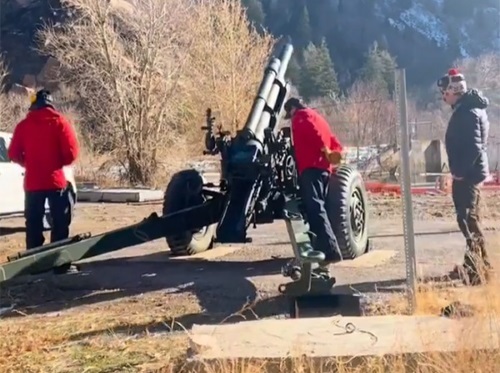FEDERAL ACTION
AASHTO Offers Feedback on Vulnerable Road Users – AASHTO Journal
White House releases environmental justice screening tool – E&E News
Three Midwestern States to Watch as They Navigate Equitable Rollout for EV Charging – Inside Climate News
How to design clean energy subsidies that work – without wasting money on free riders – The Conversation
Manchin’s permitting deal is a major setback for environmental justice – The Hill (Opinion)
COVID-19
Washington Ferries won’t rehire unvaxxed workers amid crew shortages – The Center Square
Cities became more pedestrian-friendly during the pandemic. Many aren’t going back – NPR’s Weekend Edition Sunday
INFRASTRUCTURE RESILIENCE AND SUSTAINABILITY
How Buffalo Survives Supercharged Snow – CityLab
States Test an Electrifying Idea: Roads That Can Recharge Your EV – Pew
Tackling Supply Chain Challenges and Climate Change – St. Lawrence Seaway Management Corp.
Hurricanes knock out traffic lights. Could a Tampa solar sidewalk change that? – Tampa Bay Times
Four Considerations for Building Out Electric Vehicle Charging Stations – Route Fifty (Commentary)
AIR QUALITY
Decarbonization of US aviation sector ‘within reach’: study – The Hill
Across New York, a Fleet of Google Street View Vehicles Tracks an Array of Key Pollutants – Inside Climate News
From EV school buses to tractors, US seeks zero-emission heavy-duty transport by 2040 – Electrek
ENVIRONMENTAL JUSTICE
In a Rural Corner of the West, a Local Level Push to Revive Passenger Rail – Route Fifty
Researchers Create Toolkit to Address Disparities in Transportation and Mobility – Insight Into Diversity
Buttigieg gets an earful about tribal roads during his stop in N.M – Source NM
Disabilities organizations, individuals sue DC over new bike lane designs – WTOP Radio
Bike advocates sue Portland, Oregon for failing ‘to meet its most basic legal obligations to provide safe streets’ – Cycling Weekly
NATURAL RESOURCES
llinois DOT: Changing Mowing Practices to Protect Landscapes – AASHTO Journal
Arizona DOT Highlights Benefit of Elk Fencing Project – AASHTO Journal
U.S. Department of Transportation Providing the U.S. Forest Service $5.2 Million in ‘Quick Release’ Emergency Relief Funding to Repair Hurricane Fiona Damage in Puerto Rico’s El Yunque National Forest – FHWA (media release)
CULTURAL RESOURCES
Wisconsin Governor, Joins Menominee Indian Tribe of Wisconsin, WisDOT to unveil dual-language highway signs – Wisconsin Governor’s Office (media release)
Rails-to-Trails Conservancy Invests $300,000 in Community-Led Projects to Boost Safety, Connection and Inclusion on America’s Trails – Rails-to-Trails Conservancy (media release)
HEALTH AND HUMAN ENVIRONMENT/ACTIVE TRANSPORTATION
Where ‘Vision Zero’ Is Working – CityLab
Traffic congestion may contribute to lower birthweight – Boston University School of Public Health
Passengers with Disabilities: Barriers to Accessible Air Travel Remain – GAO
Urban planners and the regulation of sound in our cities – Quiet Communities (blog)
TRB RESOURCES/ANNOUNCEMENTS
FEDERAL REGISTER NOTICES
FY 2023 Competitive Funding Opportunity: Transit Standards Development – FTA (Notice)
Outer Continental Shelf Air Regulations; Consistency Update for Massachusetts – EPA (Final rule)
Control of Air Pollution From Aircraft Engines: Emission Standards and Test Procedures – EPA (Final rule)
Great Lakes Advisory Board Notice for Virtual Meeting – EPA (Notice)
Proposed Consent Decree, Clean Air Act Citizen Suit – EPA (Notice, request for public comment)
Official Release of EMFAC2021 Motor Vehicle Emission Factor Model for Use in the State of California – EPA (Notice of availability)
John H. Chafee Coastal Barrier Resources System; Michigan, Minnesota, Mississippi, North Carolina, Ohio, South Carolina, Texas, and Wisconsin; Draft 5-Year Review Boundaries – Fish and Wildlife Service (Notice of availability; request for comments)
Aquatic Nuisance Species Task Force Meeting – Fish and Wildlife Service (Notice)
Natural Disaster Procedures: Preparedness, Response, and Recovery Activities of the Corps of Engineers – Army Corps of Engineers (Proposed rule)
Notice of Consideration of Demand Response and Electric Vehicle Standards – Tennessee Valley Authority (Notice with request for comments)
Federal-State Partnership for Intercity Passenger Rail Program; Northeast Corridor Project Inventory – FRA (Notice of availability)
Notice of the December 7 and 8, 2022, Teleconference Meeting of the Advisory Committee on Reconciliation in Place Names – National Park Service (Notice)
Notice of Availability of a Draft Environmental Impact Statement for Empire Offshore Wind, LLC’s Proposed Wind Energy Facility Offshore New York – Bureau of Ocean Energy Management (Notice; request for comments
Jefferson National Forest; Monroe County, West Virginia; Giles and Montgomery County, Virginia. Mountain Valley Pipeline and Equitrans Expansion Project Supplemental Environmental Impact Statement – Forest Service (Notice of intent to prepare a supplemental environmental impact statement)
Establishment of the Marine and Coastal Area-Based Management Advisory Committee and Solicitation of Nominations for Membership – NOAA (Notice)
National Boating Safety Advisory Committee; Vacancies – Coast Guard (Request for applications)


